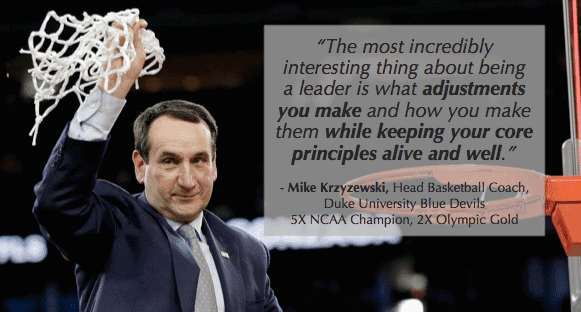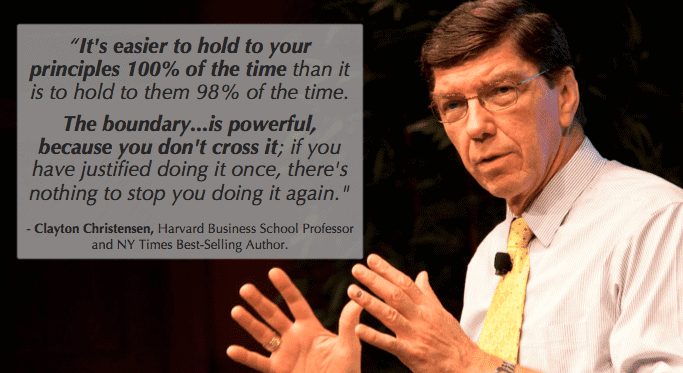"I manage one way; it either works for them or they probably won't be working for me very long."
"I try to be flexible to everyone on my team, but sometimes I worry I'm a pushover."
Deep down, you probably know that both of these are not the right approach; they're two ends of a spectrum.
On one end, a manager is being way too rigid in their approach, which causes you to have an non-diverse team that may be afraid to be creative around you if it doesn't fit "your way." On the other side, a manager who is too flexible can be taken advantage of and may not be respected by their team.
In a nutshell, this is the Leadership Paradox. Balancing when to be rigid and when to be flexible is one of the hardest things to learn as a manager. Today, we're going to shed some light on how to handle this.
Table of Contents on how to be consistently inconsistent:
The Leadership Paradox: Be Consistently Inconsistent
As a manager, you have to decide what you will be consistent on across everyone on your team, as well as where you will be flexible to circumstance, personality, and performance. Consider these guard rails below for you to apply to the unique situations on your team.
Be Consistent on:
Harvard Business School professor and author Clayton Christensen had a principle he lived by that he wrote about in his book, How Will You Measure Your Life?:
These areas below are things you cannot afford to compromise on. This side of the leadership paradox are what will define the success or failure of you as a leader, how your team perceives you, and the amount of respect you will receive.
1) You and your company's values
One of the worst things you can do is compromise on your values. As soon as you do, their meaning is lost. It's the difference between people proudly looking at the values on the wall at your company and laughing at them.
So how do you live your values? It's who you hire, who you fire, and who you promote. It's what you reward and praise (you'll see more of that), as well as what you condemn and correct (consequences mean you'll see less of it).
Most importantly, it's the tough decisions you make when there's no easy answers. As Rand Fishkin founder of SEOmoz has written:
"If you're trying to figure out what a company's values really are, look at the decisions management makes when lots of money, risk, or loss of face for executives is at odds with the stated values.
Want to know the company's mission & vision? Look at what they've intentionally chosen not to do, even though it could be lucrative."
Your values must be a consistent part of how you lead; compromising on them means they don't actually matter. Remember: Enron had values, too, and that didn't work out so well. (Ed. note - You can read more about values in this excellent post on Zurb.)

2) The example you set
As a manager, you set the culture for your team. Even if the rest of your company doesn't follow suit, holding strong to your values will help keep your team high performing, and help maintain their faith in you as their leader. This is why the legendary founder and former CEO of Intel, Andy Grove wrote:
"As a middle manager, you are in effect a chief executive of an organization yourself….As a micro CEO, you can improve your own and your group's performance and productivity, whether or not the rest of the company follows suit.”
Nothing has a bigger impact on culture than the example you set. People may or may not listen to you, but they always watch your actions. This is why 3 time Super Bowl Champion head coach Bill Walsh started to turn around a 2-14 team by first focusing on building the right habits. As Walsh described it:
"Others follow you based on the quality of your actions rather than the magnitude of your declarations.”
When your actions reinforce what you say, you will be respected and your team will act as you do. When you fail to set the right example and act as an inconsistent manager, they will see you as a hypocrite. You then aren't likely to see the results you hope.

3) Your Priority management
"Time management is an oxymoron. Time is beyond our control, and the clock keeps ticking regardless of how we lead our lives. Priority management is the answer to maximizing the time we have."
- John C Maxwell, best-selling author, speaker, and consultant on leadership
How do you start your typical workday?
Do you first tackle the most important task on your schedule (following the Eat the Frog principle) and work your way down the list of priorities, or do you take a moment to first check in with your team and follow up on everyone’s progress?
Rather than building a never ending to-do list that you can never fully catch up on, priority management is about making sure you focus on the right things. Maybe some of the things on your to-do list don't need to be there at all.
To master priority management so you're always getting the most important things consistently done, try these approaches:
- Adopt a Multiplier Mindset. Resist the urge to take on more than you can handle by still doing everything you once did as an individual contributor. Instead, look at how you can optimize the efficiency of your team.
- Apply the Pareto principle. Known also as the 80/20 rule, the Pareto Principle refers to the idea that roughly 80% of impact comes from 20% of the total actions you take. Learn how to identify your high-impact tasks and make them a top priority.
- Use the Eisenhower matrix. This handy visual aid helps you categorize tasks by both urgency and importance to learn what needs to be done as soon as possible, what should be delegated, and what needs to be deleted from your to-do list.
For more priority management tactics, check out our recent blog on why priority management beats time management – every time.
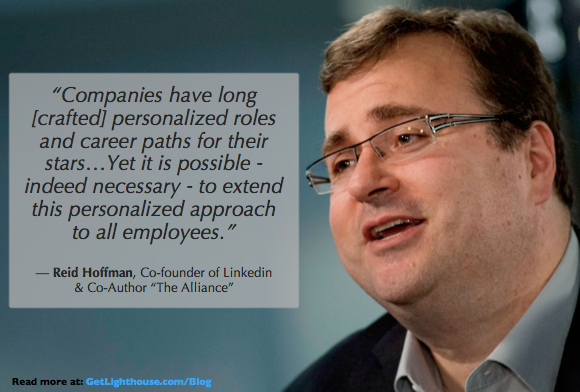
4) Investing in your people's growth
"Before you are a leader, success is all about growing yourself. When you become a leader, success is all about growing others.” – Jack Welch, former CEO of General Electric 1981-2001
It's easy to get bogged down in week to week and month to month execution. Before you know it an entire review cycle has gone by and none of your people have grown. Their skills are largely the same as before and they're no closer to the promotion they aspire to.
Or in some cases you do invest in people's growth, but only some people on your team. It's easy to put time in with your star players; they learn quickly and are hungry for new challenges. They'll likely force the issue for you if you don't, so it's hard to forget to help them. It's also easy for your lowest performers to consume a lot of your time to get them to acceptable performance.
Both are worthy endeavors, just don't forget the middle group in your team. It's in raising the bar for everyone on your team that you have the most success. It's an important, healthy conversation to talk to everyone about their goals.
If you're looking for helping talking about people's skill and career growth, we have a few posts to help you:
- Learn How to help your team achieve their goals with 3 different approaches to the conversation
- Discover how to grow your team when you can't promote them
- See all of our posts on career development and goal setting here
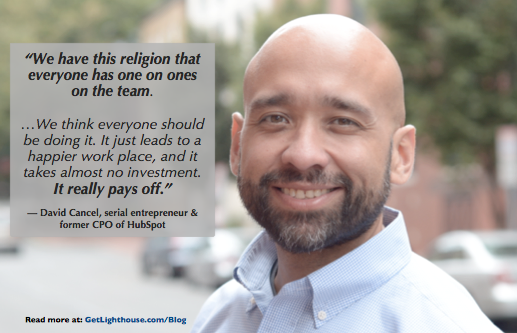
5) Having one on ones
No matter the experience level or tenure of someone on your staff, you need to have one on ones with them. They're a time to fix problems, give and receive feedback, talk about their career growth, coach them, and more. If you don't set aside that time regularly to cover these topics in a one on one, you're unlikely to talk about them at all.
This is why in reference to one on ones, Andy Grove wrote:
"Ninety minutes of your time can enhance the quality of your subordinate's work for two weeks, or for some eighty-plus hours.”
Not taking advantage of the power of one on ones for everyone on your team is a huge loss as these conversations impact their morale, motivation, and quality of their work.
The ROI of these meetings is so strong that investor and former CEO, Ben Horowitz, shared in his book The Hard Thing About Hard Things that he was willing to fire someone for not having one on ones with their team. He also went on to write how critical they are to developing a healthy organization:
"Perhaps the CEO's most important operational responsibility is designing and implementing the communication architecture for her company…Absent a well-designed communication architecture, information and ideas will stagnate and your company will degenerate into a bad place to work…one-on-ones provide an excellent mechanism for information and ideas to flow up the organization and should be part of your design.”
While each person's one on one will be a bit different in style and topics covered, it's essential that everyone on your team has them if you want to be a good place to work.
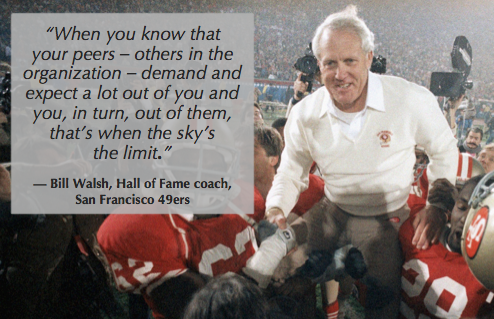
6) Holding people accountable
When there are little to no consequences for bad behavior or broken promises, not only will the undesired behavior not stop, it is likely to spread. When others see what someone else can "get away with" they're likely to try themselves. Good team members will also get frustrated, affecting their performance.
On the other hand, when you and those on your team are accountable to one another, it's amazing what you can accomplish. That's why when Bill Walsh became head coach of the 49ers he worked diligently to make everyone accountable to his high standards. As Walsh wrote:
"When you know that your peers – others in the organization – demand and expect a lot out of you and you, in turn, out of them, that's when the sky's the limit.”
For accountability to be an asset for you, it must be consistent. No one respects double standards, and your most challenging people to manage on your team will always be looking for where you set the bar. If you hold the bar high, they will perform well, but if you lose accountability, their performance will be the first to slip, and others will soon follow.

Be Inconsistent on:
Being a manager is not just about being rigid; you have to know when to be flexible and not use the same approach every time. Being consistently inconsistent is the other side of the leadership paradox.
The key is adaptation. You have to recognize where you need to adapt to the current situation, person, or opportunity. When you do, your team will flourish and succeed.
Mike Krzyzewski, head coach of the Duke Blue Devils, has won 5 NCAA basketball championships in his 35 years coaching there. Reflecting on his success, he said:
Coach Krzyzewski's last championship in 2015 was a perfect example of consistently inconsistent leadership. He kicked a player off the team for violating team rules, while adapting to multiple injuries to make a small, 8 player rotation work against the best teams in the country. He was consistent on his values, while being inconsistent on his strategies and coaching approaches needed to win.
Below are areas you should learn how to be flexible on and adapt to as you manage and lead your teams.
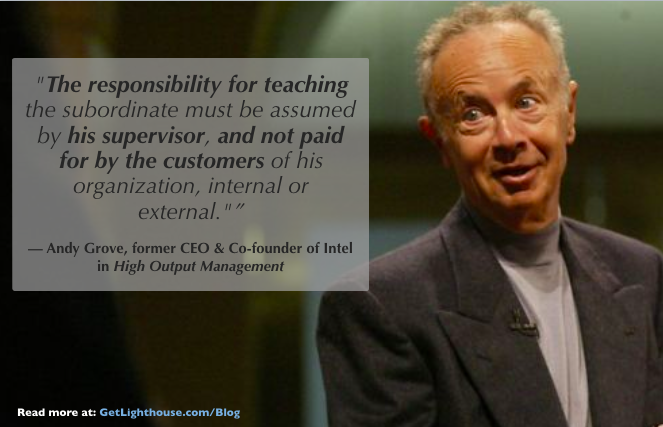
1) How you help people grow
While you need to consistently invest in the growth of your people, how you do it should vary person to person.
Some people are hyper-aggressive and will want to advance up the ladder at your company quickly. They may need more hands on mentoring, and be hungry for multiple ways to learn skills like books, training, and special projects.
Meanwhile, others may enjoy their current role and would like to go deeper in their existing skills. The best way to help them grow may be via the projects you assign to them, or what more senior people you have them work with.
Finally, others may not be hungry to grow at a given time. Sometimes it's a lack of motivation or not knowing what their goals are. Other times, there can be personal reasons.
For example, if someone is about to move their family across the country to change offices they work out of, that's probably taking their focus temporarily away from growth. In these cases, it's best to be flexible on when you talk about their goals, or in helping them experiment with potential goals before a long term commitment to one.
By adapting how you help each person on your team grow, you'll show you're invested in their growth and success no matter their goals or circumstances.
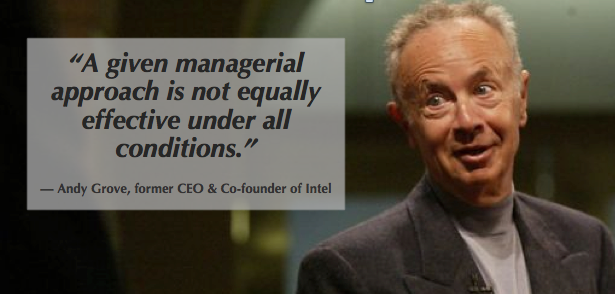
2) Your tactics to manage & motivate
Everyone on your team will not respond to the same efforts in the same way. For example, an introverted manager often wants more time to consider an idea before discussing it privately, while extroverts have no problem giving immediate reactions in a large group setting.
If you manage in a way only one type of person responds to, you will not being getting the best out of everyone on your team. You may also then only attract a certain kind of team member, losing out on the benefits of a diverse team.
One simple example you can apply this idea to is with your 1 on 1s. Some people may prefer getting out of the office, which could mean going to a coffee shop, or just taking a walk. Others may prefer a more formal meeting in a conference room. Adapting your approach to fit where they're most comfortable will make your meetings more effective and show you care about them uniquely.
As psychologist Abraham Maslow said, "if all you have is a hammer, everything looks like a nail." If you approach managing and motivating your team only one way, don't be surprised if not everyone on your team responds to it. Take the time to get to know your team and pay attention to what each person uniquely responds best to.

3) How you give feedback
You’re probably familiar with the sh*t sandwich for feedback:
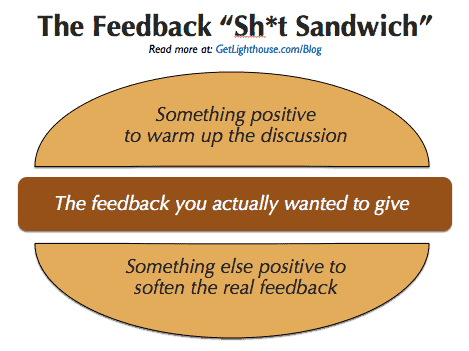
By now, you’re likely to have been both at the receiving and giving end of this bitter-sweet delicacy too many times to count. Unfortunately, the sh*t sandwich is so common and recognizable that for many, it comes across as predictable, formulaic, and even insincere.
For feedback to be effective, its style and tone need to be varied.
Here’s a few examples of different types of feedback to use depending on the outcome you want:
- If someone who usually does stellar work messes up, instead of berating them, asking questions is a great way to figure out and fix the root cause of this issue.
- If an employee is in need of extra motivation, feed forwards are a great way to focus on future positive outcomes, instead of discussing past mistakes.
- If there’s a serious issue that keeps repeating, the Prepare - Listen - Act model is especially powerful as it leads to clear expectations of a pattern of behavior that must change.
Using the right kind of feedback for the person and situation will make your feedback more effective. It will also avoid your team feeling like your feedback is too repetitive.

4) Trust and oversight
Trust is earned. The better someone performs and the more they meet your standards, the more you can give them freedom in their work. If you've seen someone deliver repeatedly on a certain type of project, you can likely ease off on the number of check-ins before the completion date (though you should never stop them entirely).
This concept is called "task relevant maturity" by Andy Grove. In his book, High Output Management, he describes how often to check in with someone this way:
"The answer is the job- or task-relevant maturity of each of your subordinates. In other words, how much experience does a given subordinate have with the specific task at hand?…the most effective management style instance varies from very close to very loose supervision as a subordinate's task maturity increases.”
It's easy to apply this to new and young employees, as you'll easily recognize the need to be very hands-on and helpful to them. The mistake many managers make is not realizing that when someone experienced changes roles or responsibilities, they also need additional help and check-ins until they prove their "task relevant maturity."
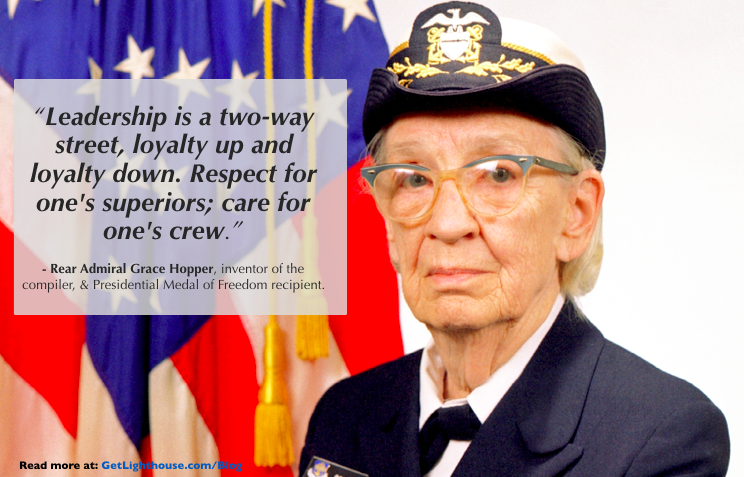
5) How hard to drive
Some managers are laid back and some are hard driving. Unfortunately, doing either all the time will negatively impact the long term performance of your team.
The laid back manager may find their team regularly missing deadlines and not taking important issues seriously. Meanwhile, the hard driving manager will drive their team right into burnout (or worse) if they never let up.
Ed Catmull, cofounder and president of Pixar, almost learned this as a fatal lesson. As he recalls in his book, Creativity, Inc:
"An overtired artist drove to work with his infant child strapped into the backseat, intending to deliver the baby to day care on the way. Some time later...his wife happened to ask him how drop-off had gone - which is when he realized he'd left their child in the car in the broiling Pixar parking lot.
They rushed out to find the baby unconscious and poured cold water over him immediately. Thankfully, the child was okay, but the trauma of the moment was imprinted deeply on my brain."
The lesson Catmull learned can apply to any team:
"It was management's job to take the long view, to intervene and protect our people from their willingness to pursue excellence at all costs."
The two most important ways to gauge how hard to drive are the importance of a situation and the state of your team.
If everything is an emergency, then nothing is. Take the time to gauge when you really need to drive hard and when you can treat your work like the paced marathon that work is. While you're balancing when to push hardest, you also have to watch how your team is feeling.
Especially after hard sprints, it's important to give your team time to recover. One of my mentors has told me that after his engineering team delivers a big project, he makes sure the next set of tasks are light. He'll sometimes also schedule a hackfest to help restore their creative energy on fun, short term projects that they choose. This ensures he never burns his team out.
Do you balance how hard you push your team? Do you recognize when your team members need to recover? The last thing you want to do is burnout your team or yourself. Learn how to avoid burnout here.
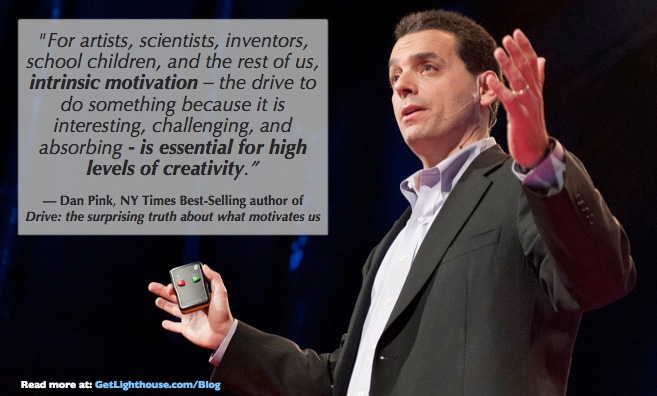
6) Ownership & Control
Especially when you transition from an individual contributor to a manager, it can be hard to give up control of your past work. However, micromanaging your team members will demotivate them and stifle creativity.
You must trust your team and give them ownership of their work. You want to hold them accountable to the results you agreed upon, while being flexible on how they get there.
The common fear that stops most managers from doing this is the fear of making mistakes. You have to let your team members fail sometimes. That's how they learn and grow. The key is to recognize what failures are okay, and which are not.
W.L. Gore, the $2.5 billion manufacturer of items like the clothing tech Gore-Tex, has an awesome boat analogy that captures this well:
"The waterline principle means that it's ok to make a decision that might punch a hole in the boat as long as the hole is above the waterline so that it won't potentially sink the ship. But, if the decision might create a hole below the waterline which might cause the ship to sink, then associates are encouraged to consult with their team so that a collaborative decision can be made.
By recognizing which risks are safe to take alone and which are not, you can give your team more autonomy, while making failure safe. Both will help your team flourish and grow, while ensuring you avoid any catastrophic problems.
---
No one said managing your team was easy. However, if you understand how to balance this leadership paradox, you will be on your way to leading your team well.

What is inconsistent leadership?
Inconsistent leadership can be good or bad, depending on how it happens.
Examples of poor, inconsistent leadership include:
- Frequently changing your mind on project direction and task instructions.
- Moving your assignments and deadlines around often, messing with your team's work schedules.
- Checking in with you randomly, and forgetting what you discuss when you do.
Meanwhile, good, inconsistent leadership includes:
- Adapting to the personality and work styles of each person on your team to help them thrive.
- Finding unique ways to help each person on your team grow despite being at different career stages.
- Giving more control and ownership of work as your team members demonstrate mastery.
What is the leadership paradox give an example of the leadership paradox?
The leadership paradox describes the need to balance two opposite approaches to leadership. It is the balancing act between being both rigid and flexible. Sometimes you need to stick to your principles and habits, and other times you need to adapt and be flexible with how you manage and lead your team.
An example of the leadership paradox is the need to be consistent in holding people accountable, while varying the type and tone of your feedback based on individual situations.
What is a paradox in management?
The leadership paradox in management is the balance managers have to strike between consistency and inconsistency in their approach to leading. As a manager, you have to decide what you'll be consistent on across everyone on your team, as well as where you can be more flexible according to situation, person, and opportunity.
Sometimes you need to stick to your principles and habits, and other times you need to adapt and be flexible with how you manage and lead your team.
